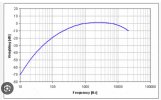hank970
Well-Known Member
Maybe the folks at Popular Mechanics should take DaVinci's idea and run with it. Then they could compare the noise level, efficiency, and usefulness of their contrivance with a conventional helicopter or quadcopter. If nothing else, by trying to reinvent the wheel, they'd learn why multiple helicopter manufacturers over multiple decades haven't adopted Da Vinci's screw-blade rotor.There was an article in Popular Mechanics recently that referenced recent findings on Leonardo Da Vinci’s screw bladed helicopter. They seemed to think that his design was more efficient and quieter for the same amount of lift. Perhaps it’s time some CFD was applied along with modern manufacturing to see if we can get away from what is essentially driven windmills.
In fact, any of us with a bit of mechanical aptitude and a 3D printer could fabricate some screw-blades, attach them to a drone, and give it a try -- a revelatory experience. As with any drone, maneuvering would rely solely on varying the RPMs of each motor, since there'd be no way to adjust the pitch or tilt of the rotor blades, as on a helicopter.











